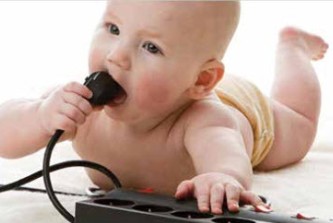
Teach Your Children About Electrical Safety
Electricity is a dynamic power source. We live our lives surrounded by it, but sometimes we forget just how dangerous electricity can be. Many home electrical fires, injuries and electrocutions can be prevented when we understand and practice electrical safety. This is especially true for our youngest co-op members.
 Altamaha EMC offers electrical safety demonstrations in the local schools to help teach children about electricity and the associated dangers. But as your child’s first and most important teacher, perhaps it’s time to have a talk with your sons and daughters to reinforce those lessons.
Altamaha EMC offers electrical safety demonstrations in the local schools to help teach children about electricity and the associated dangers. But as your child’s first and most important teacher, perhaps it’s time to have a talk with your sons and daughters to reinforce those lessons.
Start at an early age, teaching them about the physical dangers associated with electrical components and how to handle electrical plugs, outlets, switches and other devices.
Keep in mind, talking to your children about electrical safety should also include fun activities and facts about the basics - what is electricity, the need to respect its power and how to use it efficiently as they study, work and play.
As we all know, kids will be kids. Getting them to show interest in some of these lessons won’t be easy. Just remember that what your children learn from you today can be a lifesaver later when they encounter potential hazards like downed power lines in their path, play hide-and-seek behind those big metal electrical boxes in the neighborhood or are tempted to clamber up a utility pole.
There are plenty of opportunities to demonstrate safety that are as close as the electrical outlet on your living room wall. For example, show young children how plugs work, and let them know that even if they are curious about the slits of an electrical outlet, nothing else should be placed inside.
Each year about 2,400 children end up in the emergency room after suffering injuries caused by inserting objects—paper clips, pens, screws, nails, forks, hair pins, coins and more - into electrical receptacles. That’s about seven children a day who sustain injuries ranging from electric shock to burns.
But this isn’t the only electrical mishap that impacts youngsters. Our reliance on electronics and gadgets have left both youngsters and their parents at risk when they overcrowd electrical outlets, continue to use frayed wires, place devices near liquids or leave electronics on for long periods of time. We should all set good examples for our youngsters.
Supplement your lessons at home with resources galore including those provided by The Electrical Safety Foundational International. They are among the many national organizations offering free kits, videos and interactive online tools that make learning and practicing electrical safety fun for you and your children. Visit their website today at www.esfi.org for safety information.